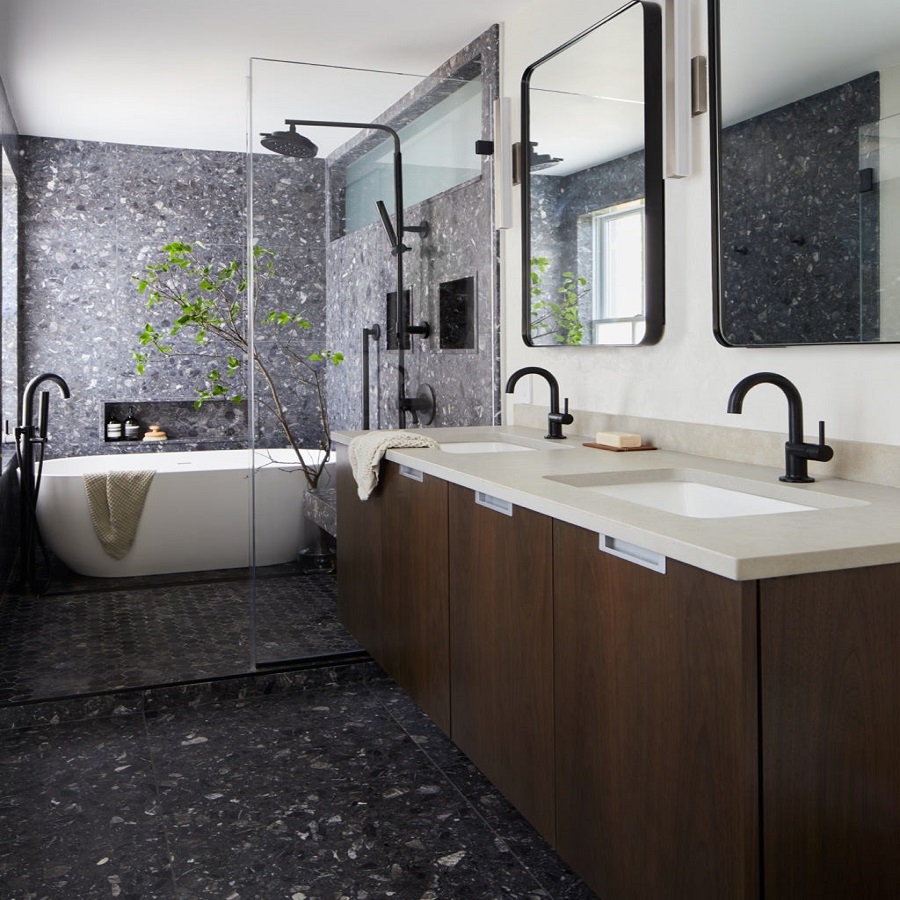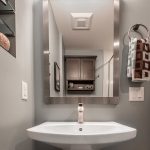Budgeting for Your Bathroom Addition
Planning a budget for adding a bathroom to your home is essential. To avoid overspending, establish a clear spending limit beforehand. Start by assessing your finances. Determine how much you can comfortably invest in the project. Next, research the average cost of bathroom additions in your region. This will give you a ballpark figure to work with.
Before diving in, set aside funds for unexpected expenses. This safety net can cover unforeseen issues during the project. Prioritize the essential components of your new bathroom. Allocate funds for crucial elements like plumbing, fixtures, and finishing touches. To save money, consider which tasks you can handle yourself. Simple tasks like painting and installing hardware can reduce labor costs.
Seek multiple quotes from contractors. This will ensure you get the best deal for the work that needs professional expertise. Always compare material prices and look for discounts and sales. Being savvy about where you purchase items can trim your overall spending.
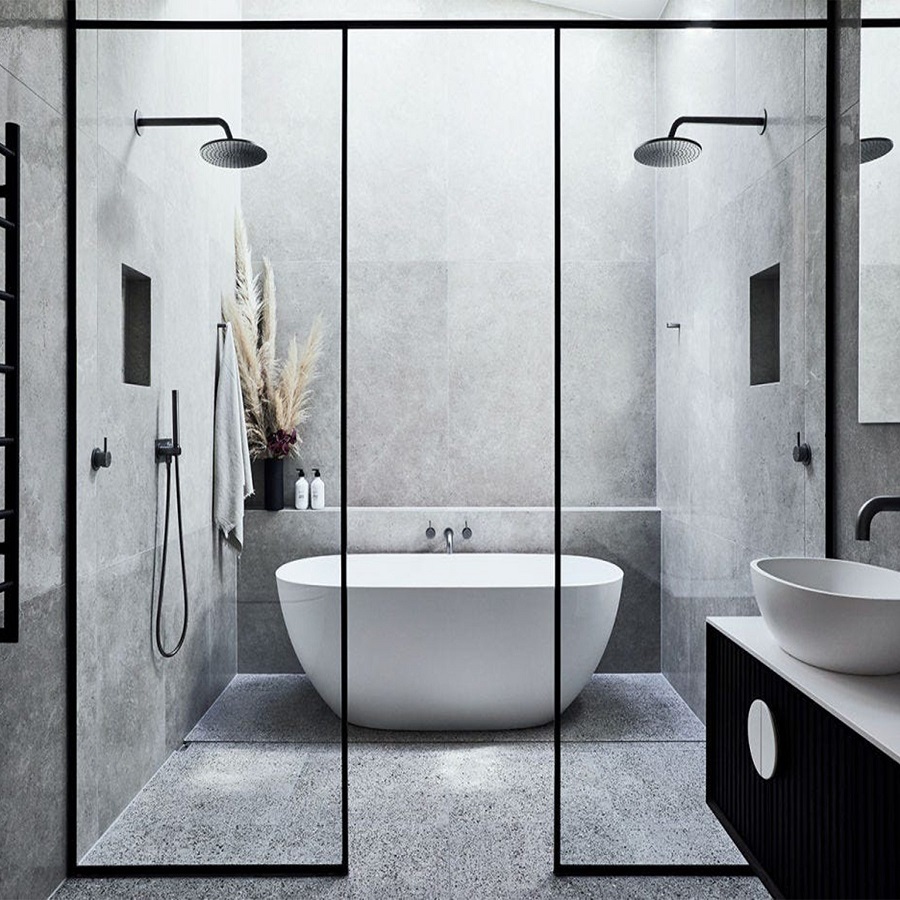
Evaluating the Value of a New Bathroom
Adding a new bathroom to your home delivers both tangible and intangible benefits. For most homeowners, a bathroom addition is not just about convenience. It’s also about increasing the property’s market value. Here’s how to gauge its true worth:
- Resale Value Boost: A new bathroom often leads to a higher selling price. Research shows that a new bathroom can lead to an average 8.7% increase in home value. A significant boost compared to adding a bedroom.
- Increased Functional Value: More than just the financial aspect, a second or third bathroom can reduce morning traffic jams. It makes life easier for growing families and when entertaining guests.
- Lifestyle Enhancements: The National Association of Realtors found that homeowners with new bathrooms enjoy their homes more. Over half felt inclined to spend more time at home. This personal satisfaction is a key aspect of the value added.
- Taxes and Permits: Assess your tax situation before starting construction. Adding a bathroom may alter your property taxes, albeit slightly. But, it’s important to factor this into your long-term financial planning.
- Permits and Regulations: Check local building regulations and acquire necessary permits. This ensures a lawful addition and avoids costly fines or redos.
In summary, evaluating the value of a new bathroom involves weighing both the financial gains and lifestyle improvements. Though there are additional costs like taxes and permits to consider, the overall benefits often outweigh the expenses. For many, a new bathroom signifies a worthwhile investment.
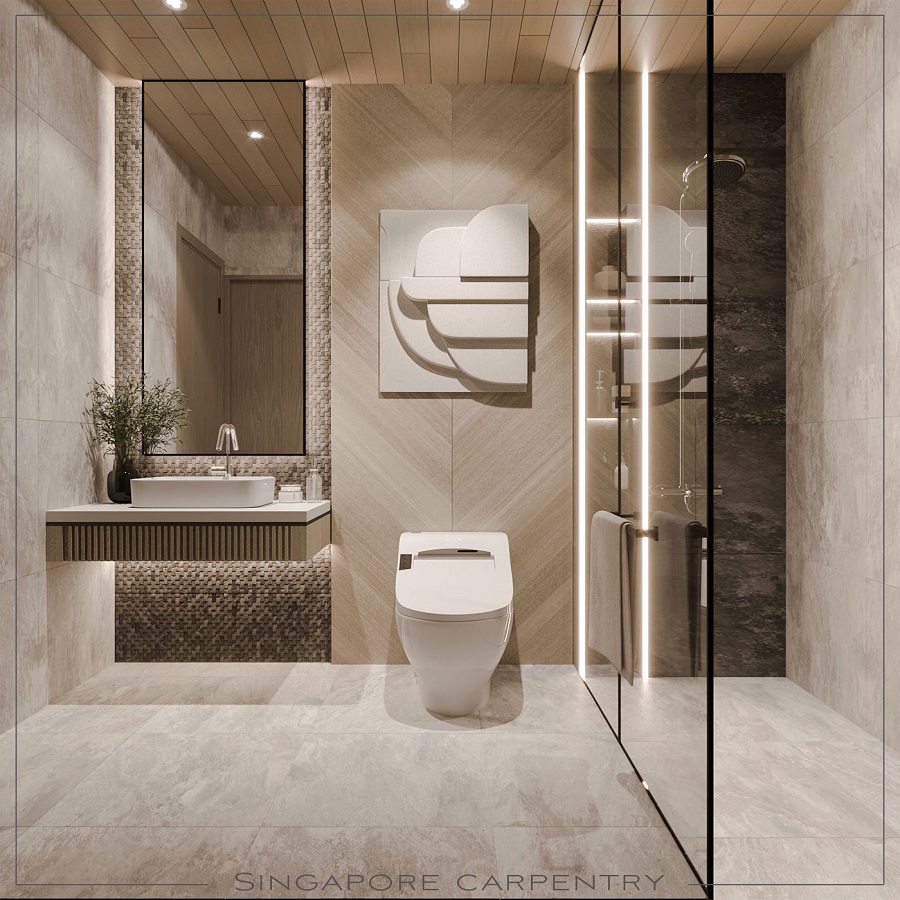
Cost to Add Another Bathroom: Estimates and Realities
Exploring the cost to add a bathroom reveals a range of prices. The expense varies greatly based on location, materials, and the extent of the project. On average, costs can range from $3,000 for simple additions using existing space to $25,000 for significant construction. This estimate doesn’t factor in the return on investment homeowners might see upon selling their homes.
Knowing the realities of costs helps in planning and preparing financially for the bathroom addition. Costs include more than just building materials and labor. They also cover plumbing, electrical work, and finishing touches. Remember, adding a new bathroom can uplift your home’s worth significantly, sometimes by as much as 8.7%. This increase can make the investment very appealing.
When planning financially, consider the cheapest way to add a bathroom. Using space already within the home’s footprint is less expensive than building an extension. Look at converting closets, underutilized areas of large rooms, or sectioning off parts of existing bathrooms.
Consult professionals for accurate quotes on the work needed. They can provide insights into the most cost-effective methods for your addition. A professional can also outline potential hurdles that may impact your budget. By doing this, you avoid surprises and ensure a smoother project journey.
In conclusion, adding a bathroom involves various costs and financial factors to consider. Keeping these factors in mind ensures that the added value to your home is maximized and aligns with your financial goals.
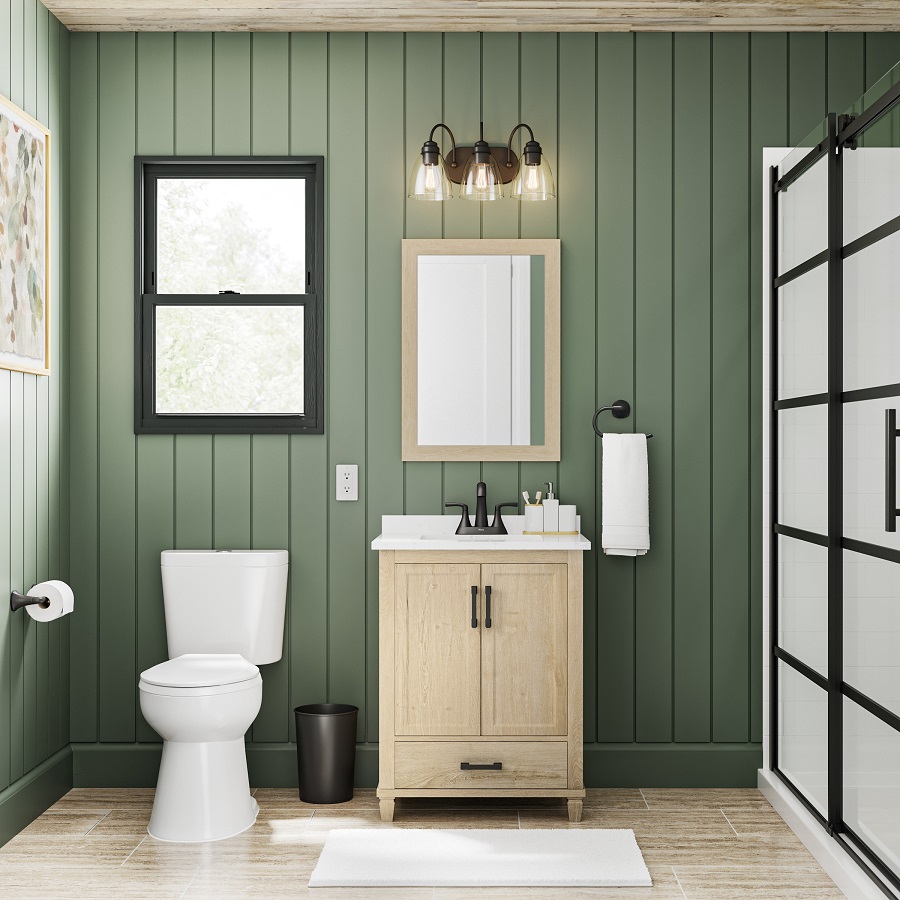
Creative Ways to Find Space for an Additional Bathroom
Finding space for a new bathroom might seem tough, but it’s quite doable. Here are some creative ways to identify potential spots in your home:
- Convert Underused Areas: Look at spaces that aren’t fully utilized. An unused closet or a corner of your basement can be perfect.
- Repurpose Rooms: Consider transforming a part of a large bedroom or section of a hallway into a bathroom.
- Split a Large Bathroom: Dividing a current, large bathroom into two smaller ones can be the cheapest way to add a bathroom.
- Utilize Odd Spaces: Check for areas like under the stairs or alcoves that might be suitable for a small half bath.
- Go Up or Out: If you have an attic or garage, consider adding a bathroom there. Understandably, this might be more expensive.
- Opt for a Half Bath: If space is really tight, even adding a half bath with just a toilet and sink can ease household congestion.
- Seek Professional Advice: An architect or contractor might identify opportunities you overlooked.
Always remember to check local building codes and regulations before you start. With a bit of creativity and strategic planning, you can find a cost-effective way to add that extra bathroom.
Plumbing Considerations for a New Bathroom
Plumbing is a vital aspect when adding a bathroom. Start by identifying where your home’s main water lines and waste systems run. This will influence where you can position your bathroom for cost efficiency. If possible, situate the new bathroom near existing pipes to save on construction and materials. This closely aligns with finding the cheapest way to add a bathroom.
Choose fixtures that match your water pressure. High-efficiency toilets, low-flow showerheads, and aerated faucets can save water and potentially lower bills. Consider the type of water heater you have. Will it support an extra bathroom? If not, you may need a larger one or a tankless model.
Don’t overlook the need for ventilation. Bathrooms require good airflow to prevent moisture build-up and mold. Include a plan for an exhaust fan or a window in your design. Make sure your existing sewage system can handle the additional waste flow. If not, upgrading or adding a sewage ejector pump may be necessary.
Conduct a thorough inspection of your floor’s carrying capacity. Bathrooms have heavy fixtures. Ensure your floors can support them.
Lastly, understand the legal side. Secure the proper permits for plumbing work to meet local regulations. This ensures a safe addition and preserves the value of your investment. Consult with professionals to navigate these technical aspects. Hiring a plumber might add to the cost, but it guarantees that the work meets safety standards.
By carefully considering these plumbing elements, you ensure the functionality and longevity of your new bathroom while keeping costs down.
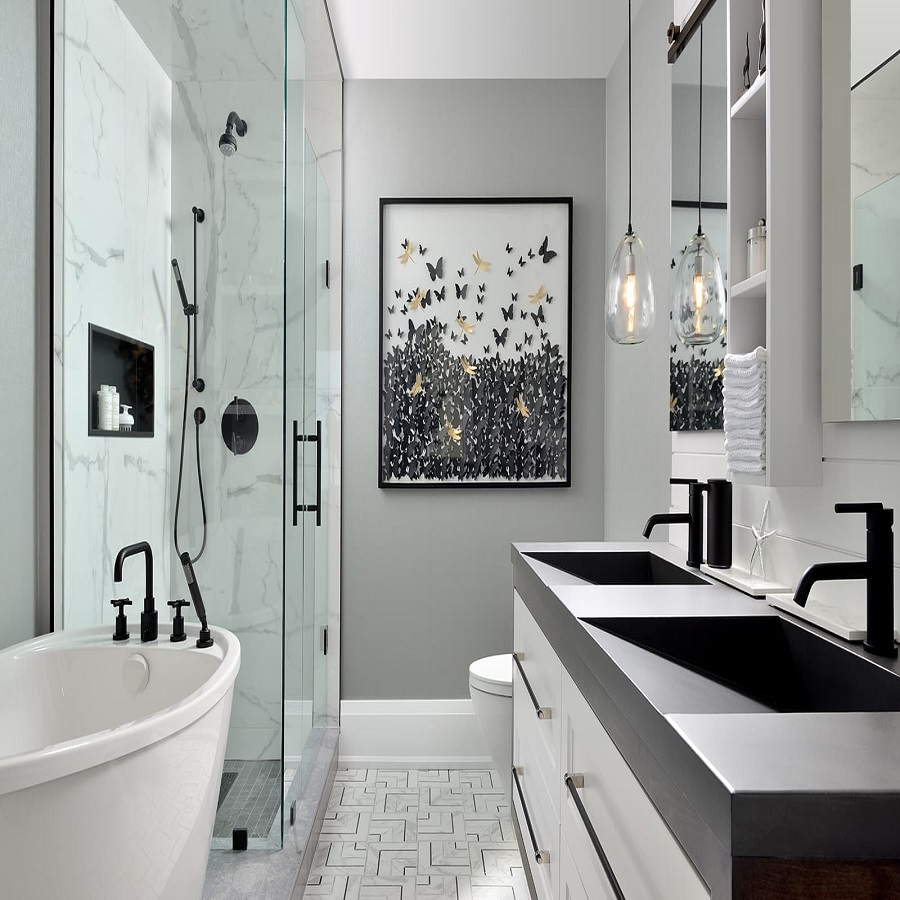
Tips for a Low-Cost Bathroom Upgrade
Enhancing your bathroom doesn’t have to deplete your wallet. Here are practical tips for upgrading your bathroom at a minimal cost:
- Choose Affordable Materials: Opt for cost-effective materials that look great but don’t break the bank. Ceramic tiles and laminate countertops are good examples.
- Repaint Wisely: A fresh coat of paint can transform your bathroom. Choose mildew-resistant paints designed for wet environments.
- Update Fixtures: Swap out old faucets and showerheads for new, modern ones. This small change can make a big impact.
- Do It Yourself: Handle simple tasks yourself, like painting and installing new hardware. DIY saves on labor costs.
- Refinish Instead of Replace: Consider refinishing your bathtub or shower instead of buying new. It’s much cheaper and can look just as good.
- Shop Smart: Hunt for deals on materials and fixtures. Check out sales, discount stores, and online marketplaces.
- Re-purpose Items: Get creative and use furniture or decor you already have in new ways.
- Limit Tile Use: Tiles can get expensive. Use them selectively or as accent pieces to cut down on costs.
- Install Energy Efficient Lighting: LED or other energy-saving bulbs can brighten your space while reducing your bills.
Remember, planning and thoughtful choices go a long way. Focus on changes that offer the biggest visual impact for the lowest cost. Being handy and willing to put in some work can also significantly lower the overall expense of your bathroom upgrade. Keep these tips in mind and you’ll be on your way to a more attractive, budget-friendly bathroom space.
DIY vs. Professional Bathroom Installations: What to Consider
When planning to add a bathroom, you face a key choice: DIY or hiring professionals. This decision impacts costs, timing, and quality. Here’s what to think about.
- Skill Level: Assess your abilities honestly. Basic tasks like painting may be doable, but plumbing requires more expertise.
- Time Investment: DIY projects take time. Consider if you can afford this commitment alongside your daily responsibilities.
- Tools and Equipment: Professionals come equipped. For DIY, you may need to buy or rent tools, adding to your costs.
- Quality of Work: Expert work often lasts longer and looks better. Poor DIY can lead to more expenses later.
- Safety: Mistakes can be dangerous. Electrical and plumbing work pose risks if not done correctly.
- Permits and Codes: Professionals understand local codes and can secure permits. DIYers must navigate this themselves.
- Warranty and Guarantees: Professional work often comes with warranties. DIY does not.
Weigh these considerations carefully. If you’re confident in your skills and understand the risks, DIY might save you money. Otherwise, hire professionals for a reliable and quality installation.
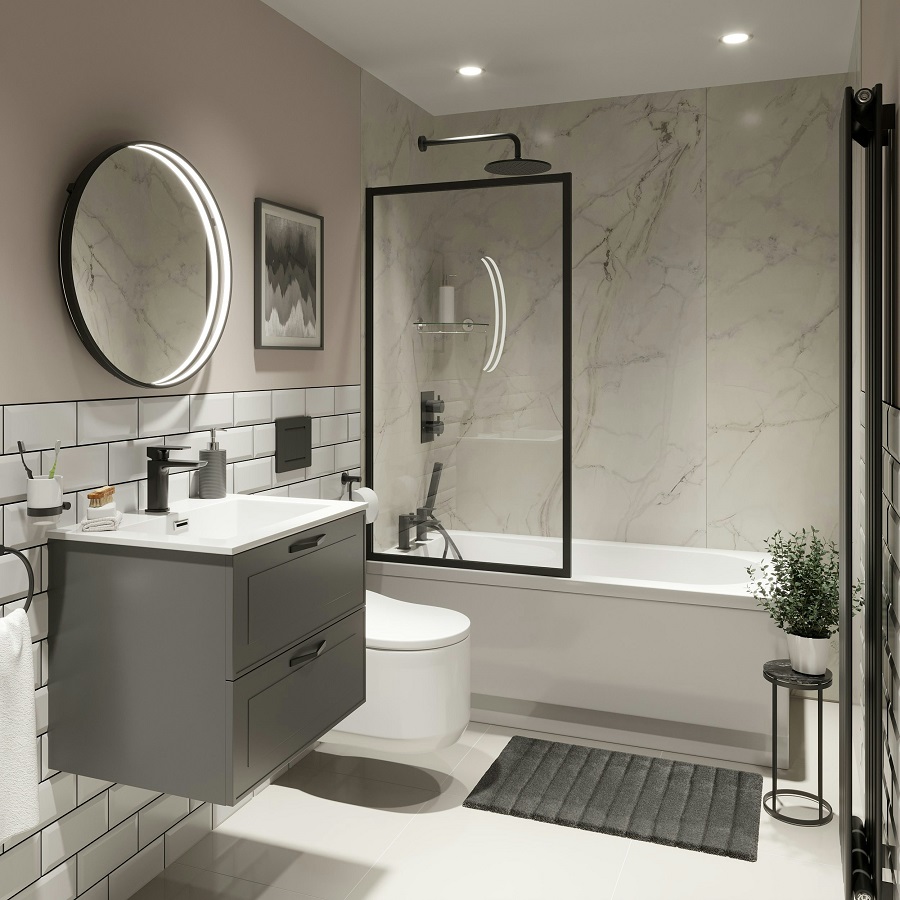
Financing Options for Bathroom Remodeling
When remodeling a bathroom on a budget, exploring financing options is crucial. Here’s how you can fund your bathroom addition without breaking the bank:
- Savings: If possible, use your savings. This avoids debt and interest fees.
- Home Equity Loan: Tap into your home equity for a loan. This can offer low rates but puts your home at risk if you can’t repay.
- Personal Loan: Look into personal loans. These require no collateral but might have higher interest rates.
- Credit Cards: Credit cards offer quick access to funds. Be wary of high-interest rates and strive to pay off quickly.
- Refinancing: Mortgage refinancing can yield a lower interest rate. Use the extra funds for your bathroom.
- Government Loans: Some government programs offer home improvement loans. Check if you qualify.
- Payment Plans: Some contractors provide payment plans. This splits costs over time, making payments manageable.
Choose the option that aligns with your financial situation. Aim for the cheapest way to add a bathroom. Plan carefully to avoid long-term debt. Consult a financial advisor if unsure which route to take.
Before deciding, compare the terms and conditions of each option. Look for hidden fees and repayment penalties. Ensure the choice fits within your budget and won’t strain your finances.
In the end, selecting the right financing option can make your bathroom remodeling project achievable and sustainable. With proper planning, your new bathroom will add value to your home without causing financial strain.
